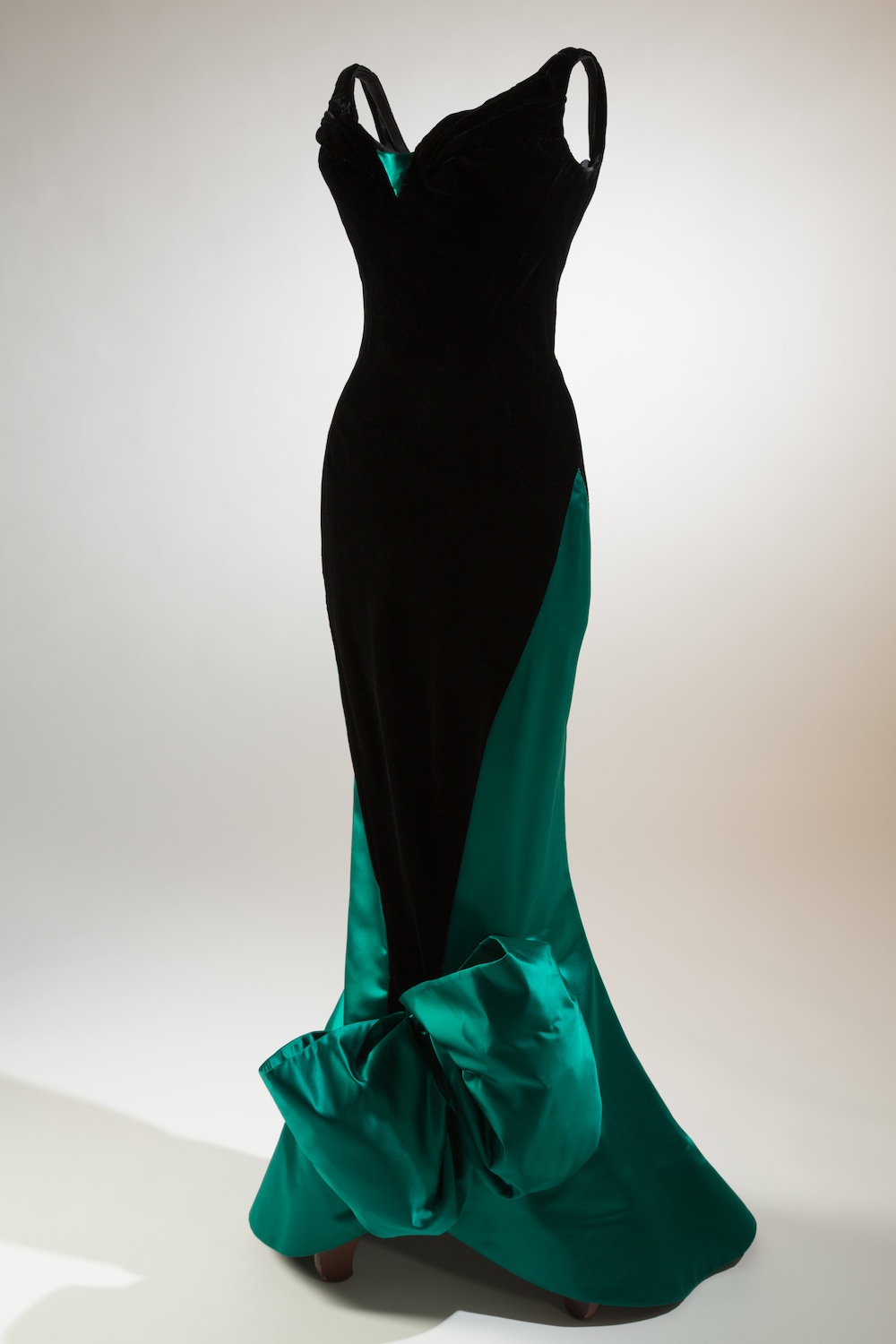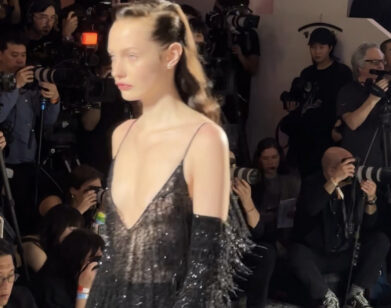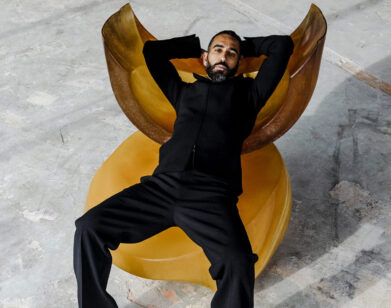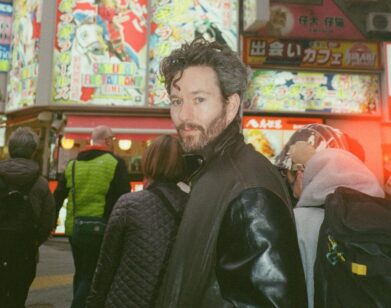Fashion and Technology, from Looms to 3D Printers
The delicate nature of clothing necessitates a biannual turnover for exhibitions at the Museum at the Fashion Institute of Technology—any longer, and garments on view risk damage. This time limit suits the new exhibition on view at the Museum, aptly titled Fashion and Technology: both halves of its focus are notoriously subject to rapid change. For curators Ariele Elia and Emma McClendon, the biggest challenge came in pinning down the fluid relationship between the two.
The show opens with a dress and handbag created with a 3-D printer. The second room sends the viewer a couple hundred years backwards to the eve of the Industrial Revolution, where the spinning jenny facilitated the mass production of cotton thread. A shimmering brown jacquard day dress from 1844 announces the invention of the Jacquard loom. Celluloid, a plastic manufactured so it resembled a polished surface, allowed cheap items to resemble luxury goods—as illustrated in the exhibition by a faux tortoise hairpin.
The curators’ loyalty to their mission—tracing the interwoven histories of clothing and technology—occasionally means the show is less glamorous than is typical of the Museum. It’s easy to overlook a Bonnie August leotard and skirt and a Marc Audibet dress. (Especially when they’re bathed in light from the shining silver lamé Thierry Mugler gown a few feet away—a circa-1979 vision of “futuristic.”) But the advancement they illustrate—the introduction of Lycra blends into modern wardrobes—is essential to fashion history.
Partially because the period brings a broader scope to the fashion and technology crossover, the contemporary portion offers the most fascinating objects. Photo manipulation software allows for more intricate patterns. Fashion shows incorporate a circus of electronics, turning runway productions into memorable performances. One screen depicts the Helmut Lang Fall/Winter 1998 show that was dispatched to “guests” via mailed CDs and streamed live on a late-20th-century Internet. (No word as to how smoothly that went.) Alexander McQueen’s famous Spring/Summer 1999 show, accented with two spray-painting robots, also plays.
Outside of a lone LilyPad Arduino, a versatile (and sort of cute) microcontroller board that can be threaded into clothing, viewers must envision leaps forward in technological capabilities through the apparel itself, and in recent times through its theatrical presentation to the public. Diane von Furstenburg’s use of the “Google Glass” at her Spring/Summer 2013 show—a short documentary on which closes the exhibition—represents all of the above. Sergey Brin was invited to demonstrate the eyewear. Technology in the fashion world, it seems, has gone from a stagehand in the wings to a front-and-center star.







